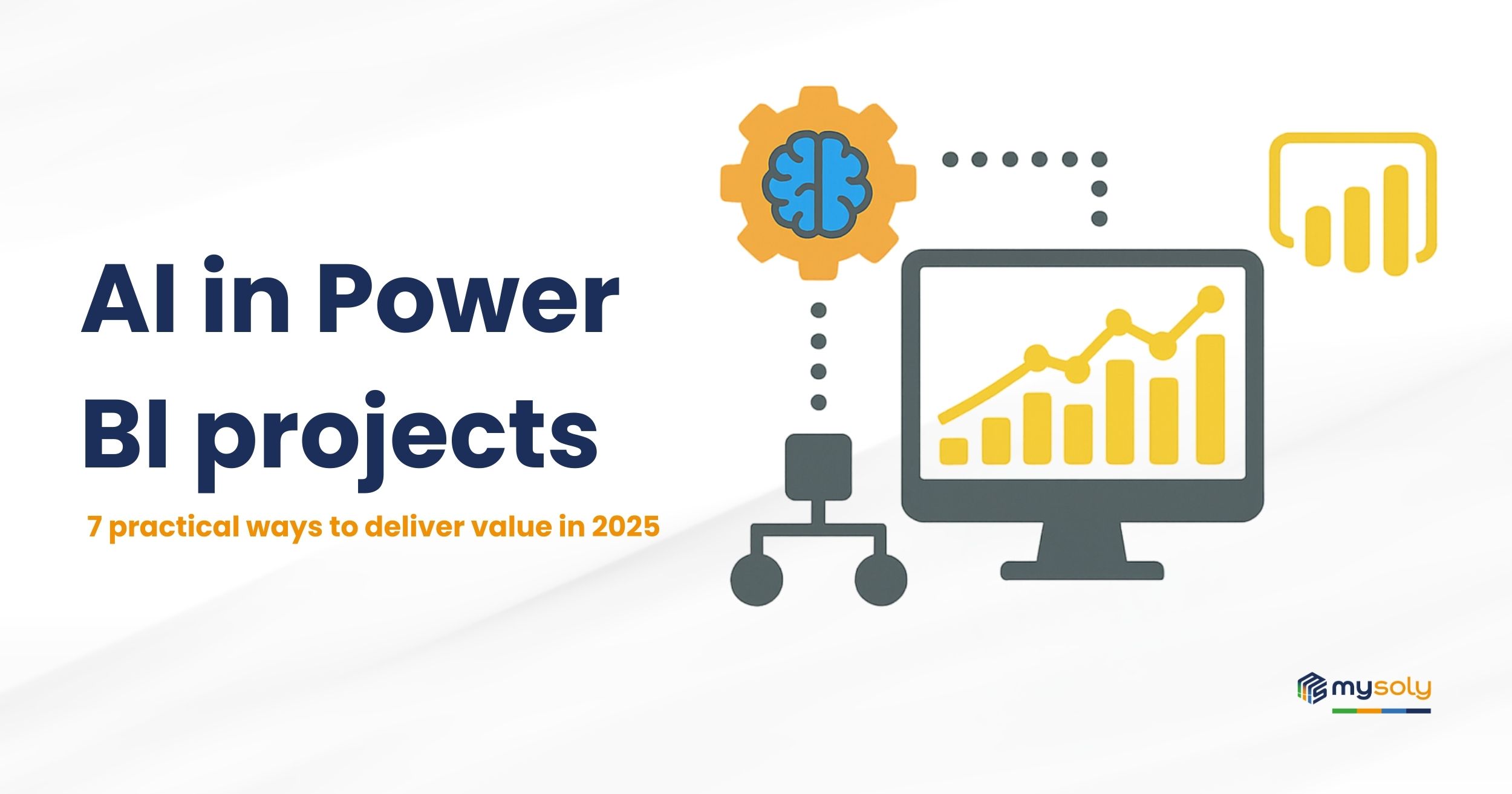AI in Power BI projects: 7 practical ways to deliver value in 2025
Introduction
AI in Power BI projects is no longer optional. Teams need answers fast. Leaders expect visible value. This article gives a simple path. I keep the language clear and short. I cut complexity and remove guesswork. I also give copy‑ready prompts and ideas. AI in Power BI projects boosts speed, quality, and trust. Let’s turn that promise into daily practice.
1) Copilot: jump‑start analysis and reduce rework
Copilot turns natural language into measures. You ask a question. It proposes DAX, visuals, and summaries. You review and adjust the result. You then save the measure and share it. This flow saves hours every week. AI in Power BI projects often starts with Copilot.
- State the goal and the data scope.
- Validate the output and version the measure.
- Capture feedback and refine your prompt.
2) Narrative with Copilot: clear summaries for every audience
Executives want the main point fast. Narrative with Copilot reads the page and writes a brief. You choose tone and focus. You can select a visual or the whole page. The tool drafts a short, plain summary. Meetings then stay short and useful. AI in Power BI projects improves shared understanding.
- Tip: Use a decision line like “Revenue fell due to X; fix with Y.”
3) Key Influencers: explain what drives the metric
Key Influencers ranks the factors behind a metric. You see the top drivers first. You test ideas and plan experiments. The result creates shared hypotheses. This helps churn, NPS, and marketing use cases. AI in Power BI projects supports faster root‑cause work.
- Pick a clear target metric.
- Check data quality and balance.
- Confirm results with A/B tests.
4) Decomposition Tree: follow the path to the root cause
The Decomposition Tree breaks numbers into branches. You expand the tree and compare slices. “AI Split” suggests the next branch to open. Analysts save time and keep focus. Operations, sales, and quality teams love this tool. AI in Power BI projects becomes hands‑on and visual.
- Workshop trick: Give each person a branch, collect one insight, then merge into an action list.
5) Anomaly Detection: catch issues before they grow
Time series often hide problems. Anomaly Detection flags the odd point. You tune sensitivity and window size. You also read the explanation. You then set alerts for key measures. Maintenance, revenue, and traffic all benefit. AI in Power BI projects turns noise into early warnings.
- Fix the time grain and fill gaps.
- Show expected bands on the chart.
- Send alerts to Teams or email.
6) LLM integration: tailor insights to your company voice
Sometimes you need custom text or labels. Use Azure OpenAI for prompts and classification. Call the API from Power BI flows. Summarize comments or group reasons. Add your style guide to each prompt. Track usage and cost with governance. AI in Power BI projects then fits your brand and context.
- Prompt example: “Summarize this page in one short paragraph. List reasons as bullets. Add three next actions.”
7) From old AutoML to a modern Fabric + Copilot flow
Dataflows V1 AutoML has ended. Move to Fabric and Copilot patterns. Strengthen the model and the metric glossary. A shared vocabulary prevents confusion. Then use Narrative for weekly updates. AI in Power BI projects delivers value with a modern flow.
Ready‑to‑use prompts (copy and adapt)
- Summarize the last 90 days and propose three actions.
- Write this DAX measure and explain each step.
- List monthly deltas and the top drivers.
- Group customer feedback into three themes with examples.
Quick project ideas
- Cost watch: Use Anomaly + Narrative to monitor spikes.
- Churn early warning: Use Key Influencers to build a risk score.
- Quality control: Use Decomposition Tree for defect sources.
- Exec brief: Use Narrative for a weekly one‑page update.
Measure and improve
Track hours saved and decision time. Sample outputs and score accuracy. Version prompts and keep a style guide. Keep the data dictionary current and visible. Link the dictionary into Copilot. AI in Power BI projects becomes repeatable and durable.
Conclusion
The path is practical and short. AI in Power BI projects speeds analysis and reduces errors. Copilot and AI visuals also ease learning. Teams align on terms and act faster. Start small and measure the gains. Then scale the flow and add governance. Keep it simple and keep it useful. That is how you win in 2025.



